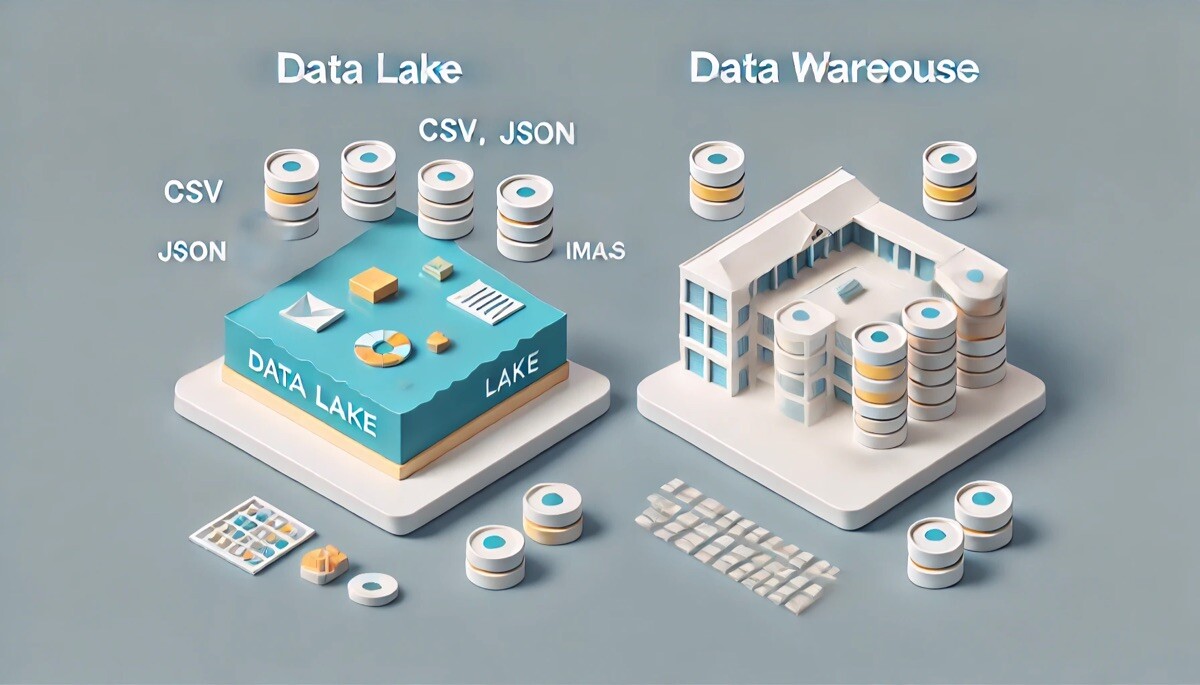
Data Lake vs Data Warehouse
Data lakes and data warehouses are critical technologies for business analysis, but the differences between the two can be confusing. How are they different? Is one more stable than the other? Which one is going to help your business the most? This article seeks to demystify these two systems for handling your data.
What is a Data Lake?
A data lake is a centralized repository designed to store all your structured and unstructured data. Further, a data lake can store any type of data in its native format, ignoring size limits. Data lakes were developed primarily to handle large volumes of data, and thus they excel at handling unstructured data. You typically move all the data into a data lake without transforming it. Each data element in a lake is assigned a unique identifier, and is extensively tagged so that you can later find it via a query. The benefit of this is that you never lose data: it can be available for extensive periods of time and it’s very flexible because it need not adhere to a particular schema before it is stored.
What is a Data Warehouse?
A data warehouse is a large-capacity repository that sits on top of multiple databases. It is designed to store medium to large amounts of structured data for frequent and repeatable analysis. Typically, a data warehouse is used to bring together data from various structured sources for analysis, usually for business purposes. Some data warehouses can handle unstructured data, but this is not common. Work is involved to ensure that the data types are compatible before you can integrate the data. Because the data stored in a warehouse is structured, the size of the data is constrained, and the schema is determined before data can be added to the warehouse.
Data Lakes vs Data Warehouses
Picture a warehouse: there’s a limited amount of space, and the boxes must fit into a particular slot on the shelf. Each box needs to be stored in order so that you can later find it, and you will likely need to design the warehouse so that old inventory is purged periodically. Most of these same constraints apply to a data warehouse: the size is fixed, and each piece of data must be stored according to a schema that is carefully designed before you can add the data to the warehouse. Data warehouses are optimized for structured data.
By contrast, a data lake is amorphous, the boundaries can grow or shrink based on the contents. Like a lake, if more data is poured in, the data lake expands, and when data is removed it shrinks. The data does not need to be structured because you use extensive tagging to find the data when you need it. Data lakes are optimized for unstructured data.
The following table shows some of the key differences between data lakes and data warehouses.

